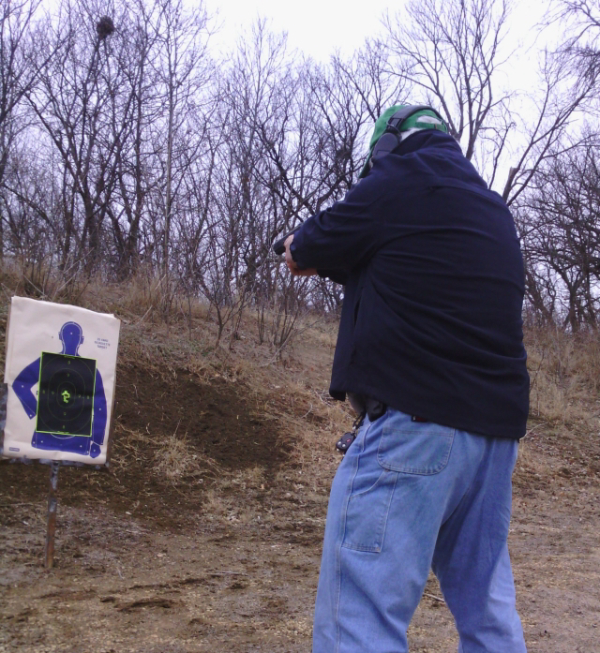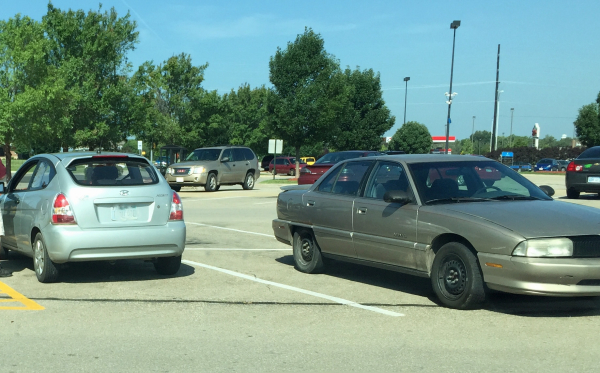
Editor’s Note: Range ‘dance,’ often called ‘look and assess,’ ‘down, scan, holster, secure’ – whatever – has been roundly decried as ‘range theatrics.’ While the discussion could be of minor interest, it doesn’t address the actual point. Physical skills are instructed in useful, relevant and safe pieces. The aim is to go from those bits to working in actual sparring and rehearsal – force-on-force. The problem is that those exercises are (1) time and labor intensive, (2) incredibly subjective and can slide into the kids’ game of “I got you first –” “No, I got you first!” – and (3) require strict observance of safety protocols. I’ve known people injured – one forced to retire – due to momentary lapses in safety protocols. The ‘video game’ style simulators are safer, but less real. The simulations can be cartoonish or all too real. The idea behind those ‘range theatrics’ isn’t “breaking tunnel vision.” That’s unfortunate shorthand, often uttered by those who fail to explain the root of the issue: practice of a survivable post-shooting procedure. While the “break tunnel vision” mantra started before broad circulation of the dash cam video of SC Trooper Mark Coates in the 1990s, that video jumpstarted a number of instructors – including me – to adding a block of instruction (as well as all-too-infrequent practice) of an actual rehearsal that addressed just that need. And we barely scratched the surface; part of the younger crowd (more recently retired from public service) took the issue much further – like Bill Blowers, Tap-rack.com. With that as the introduction, here’s the feature – from 2016 and, again, 2018. It’s still relevant.
I was watching a video by a SWAT cop/trainer about the “tac load.” This is part of staying current with doctrine, but in his discussion and demonstration he brought back an issue I’d raised in the 1990s at my agency – and I later took it on the road to some training organizations.
By way of introduction to the “tac” load technique and the reasons for it, the instructor, Bill Blowers, mentioned a bit of range doctrine he considers silly – the post shooting “scan.” For those who came in late, many of us began requiring a bit of a post-shooting procedure during firing range exercises. It started – and for some outfits ended – with glancing left and right after finishing a string of fire. Others quickly noted we live in a 360° world and required people to look behind them. As people became bored with the process, they’d “look without seeing.” This resulted in range games, like holding up one or more fingers behind a shooter during this ‘scan’ or swinging the gun back and forth across the target line.
Bill asked on his video – and I echo this now – have you ever heard of a law enforcement incident where an officer stopped an immediate threat and was cut down from behind because of failure to ‘scan?’ He notes the citizen incident in a Nevada big box store – proving that it’s possible. Possible, but not apparently likely. If you’re aware of a case, let us know.
As opposed to that possibility, Blowers’ agency has had a number of incidents where deadly attackers were shot to the ground – yet weren’t stopped. Some only complained, made no further move to attack, but easily could have -- the bird in the hand. Reanimation is a very real issue.

He then mentions the case of SC Trooper Mark Coates as he explains his post shooting procedure. I explained my procedure in a feature, here: http://www.thetacticalwire.com/features/228724. The Blowers’ technique is similar to mine, but I believe it’s better explained.
When the offender goes down and appears to be out of the fight, he improves his position – MOVE. Now on the range, particularly in line drills or when “dry practicing” this, he uses visualization, a valid training technique. It’s a component part of the deal. In my segment, I referred to it as COVER. Bill properly notes there may be no cover – not even the faux cover of an auto in a parking lot, but it’s better than nothing. If the offender fell with his head away from you, moving around him to make it tougher for him to acquire you could turn the trick. Just move somewhere.
This gives him time – the second component of my procedure. During that time, you can do a condition check of the piece – is it out of battery, is it locked open on an empty magazine – and it includes an assessment of ammo status. In his words, “is the tank more or less than half empty?” Making sure you have an eye on the offender, it’s time to break out of that tunnel vision. Who else is around? The shooting was in public, is a bystander set to walk between the muzzle and the offender? What about responding officers, other armed citizens? Besides, the attacker could have friends nearby who would intervene – just because it’s rare doesn’t mean it won’t happen to you.
Blowers mentions the armed citizen in the shooting aftermath using the cell phone ‘speed dial’ for 911, then putting it down or activating the speaker phone to explain the location, the type of incident (“citizen with a license, had to defend myself from someone who tried to kill me”), a self-description – then just letting it run.
Hitting the outstanding point for the licensed citizen, Blowers recommends taking your family and “further improving your position” by unassing the area – just leave. As opposed to “flight equals guilt,” you’re leaving a demonstrably dangerous scene because you are not a first responder. In the era of the cell phone, you’re not escaping. You’re selecting another venue to meet the law.

If the offender crawls away – or gets up and walks away – that’s not your concern. As to my post-shooting procedure, I’m not the only one who considers more than a scan after shooting; Pat Rogers discussed “post-engagement sequencing,” James Yeager told me about his method and now Bill Blowers, an active member of service, explains his.
Watch the remainder of the video, found here: https://www.youtube.com/watch?v=1urNvj8l_L8 to see his explanation of the tac load – I don’t care for the name, as it’s administrative – but you still need to do it efficiently. And he does.
Consider what happens after the shots are fired. Snatching defeat from the jaws of victory is a non-starter. Think now about what you need to do. List it, have a sequence and practice it even if it has to be “dry practiced.” (Note: mental rehearsal is a thing – and can be practiced ‘dry,’ on a live-fire range and, with caveats, even in competition.)

Bill Blowers is owner of a training company for military and law enforcement, http://tap-rack.com/ and a moderator of https://primaryandsecondary.com/. He was a Sergeant for a municipal agency in Washington State, assigned to his agency’s training unit and a team leader on a large and active regional SWAT team.
-- Rich Grassi